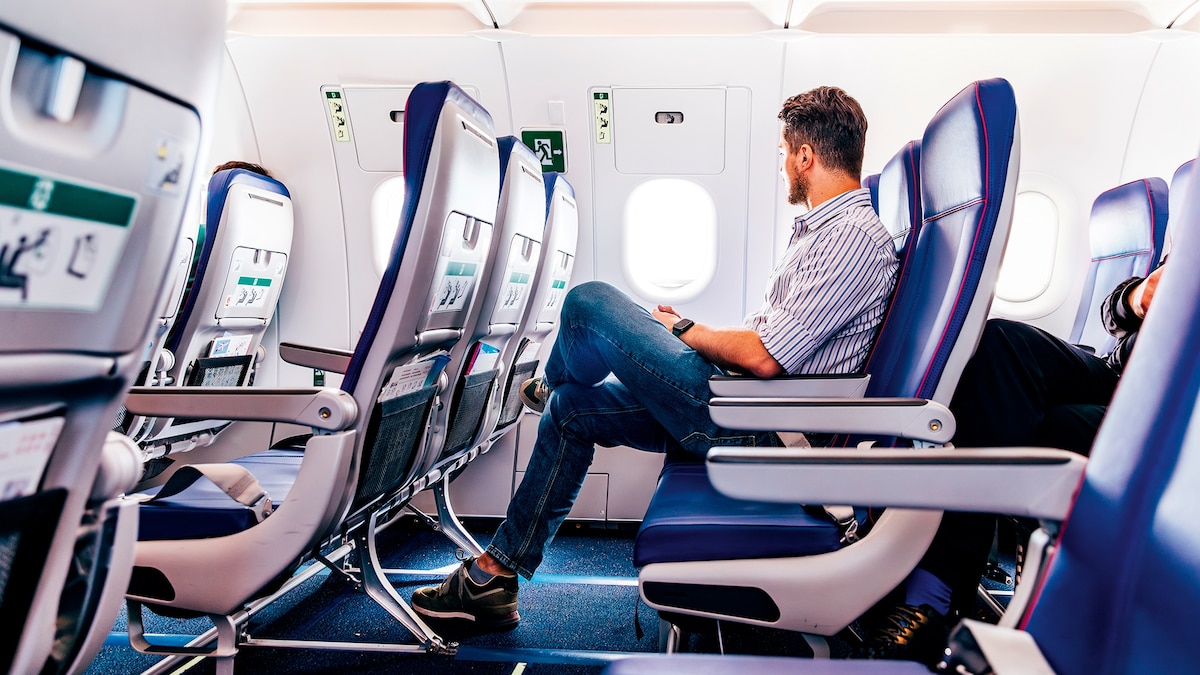This article was produced by National Geographic Traveller (UK).
Some airlines are using seat selection to give their passengers even more input into what happens once they’re on board. Over recent months, new policies have been introduced in Asia that go as far as providing information on who you might sit next to — although regulators argue this discriminates against certain groups. From the pioneering airlines to how seat selection works, here’s everything you need to know.
What’s the latest?
India’s largest low-cost airline, IndiGo, recently began piloting a new feature on their seating plan. A pink icon, visible only to those who identify as female on their booking, now indicates which seats are already occupied by those who do the same. Those who identify as male on their bookings aren’t able to see the gender of their seatmates. The decision came in response to an IndiGo survey that asked women what would make travel more comfortable. Trains and buses in India already allow women to book seats in this way, reportedly to reduce the risk of sexual assault. For the aviation industry, it’s a world first, but it’s unclear at this stage whether other airlines are likely to adopt it.
Further east, Japan Airlines has introduced a similar system where passengers can avoid sitting next to children under the age of two — giving travellers the chance to avoid crying infants if sleep is a priority, for instance.
How does seat selection work?
All UK airlines, including British Airways and EasyJet, offer pre-booked seat selection for free or a variable fee. For those not wanting to pay, a seat is assigned during check-in, typically 24 hours before.
In the US, United Airlines recently rolled out a free preferred seat waiting list feature on its app, which automatically allocates passengers their favourite seat if it becomes available. Southwest Airlines has also made the decision to move away from open seating (where passengers could sit anywhere) to seat allocation, based on 80% of passengers surveyed calling for the change to eliminate stress from the boarding process.
Is seat selection fair?
Offering passengers a choice when it comes to seating gives people a sense of control. Dr Sarah Bishop, a Birmingham-based clinical psychologist, says: “Research shows that when people feel in control, they tend to be less anxious.”
However, the move to seat selection could have detrimental effects. A 2018 report by the Civil Aviation Authority raised concern over ‘particular impacts on specific groups, such as those with accessibility needs’. People may want to sit together for many reasons, which could include travelling with a carer — and in such cases, they should not have to purchase specific seats. In the report, it was found that airlines were separating groups containing a passenger with accessibility needs as often as groups overall (18%), meaning their needs are not taken into account.
Is seat selection worth the cost?
A recent survey by Which? found that a family of four on a British Airways flight from London to Tenerife would have to pay an extra £112 to pre-select seats together. They also found it was likely to be a waste of money, as customers who didn’t pre-book often ended up sitting next to each other anyway. There is no legal requirement for airlines to sit groups together and you should still consider paying if flying with a low-cost carrier like Ryanair or Wizz Air — the chance of being separated was found to be higher on these airlines.
Is there a ‘best seat’ on the plane?
The SeatGuru website has advice on the best seats depending on the plane model. Choosing between window or aisle is up to the individual but research has found there’s a lateral tendency to sit on the right of the plane, as most of us are right-handed. While air travel is considered one of the safest modes of transport, according to Wired, the middle of the plane can offer relief from turbulence, while the rear is most likely to stay intact in a crash.
What if you want to move seats?
Most airlines will allow you to do so before check-in closes, but may charge the difference if it costs more. Once on board, you shouldn’t move to an empty seat without permission — it’s essential that staff know where you are in case of an emergency. The best rule of thumb is to speak to cabin crew, as they’ll have the final say.
To subscribe to National Geographic Traveller (UK) magazine click here. (Available in select countries only).

